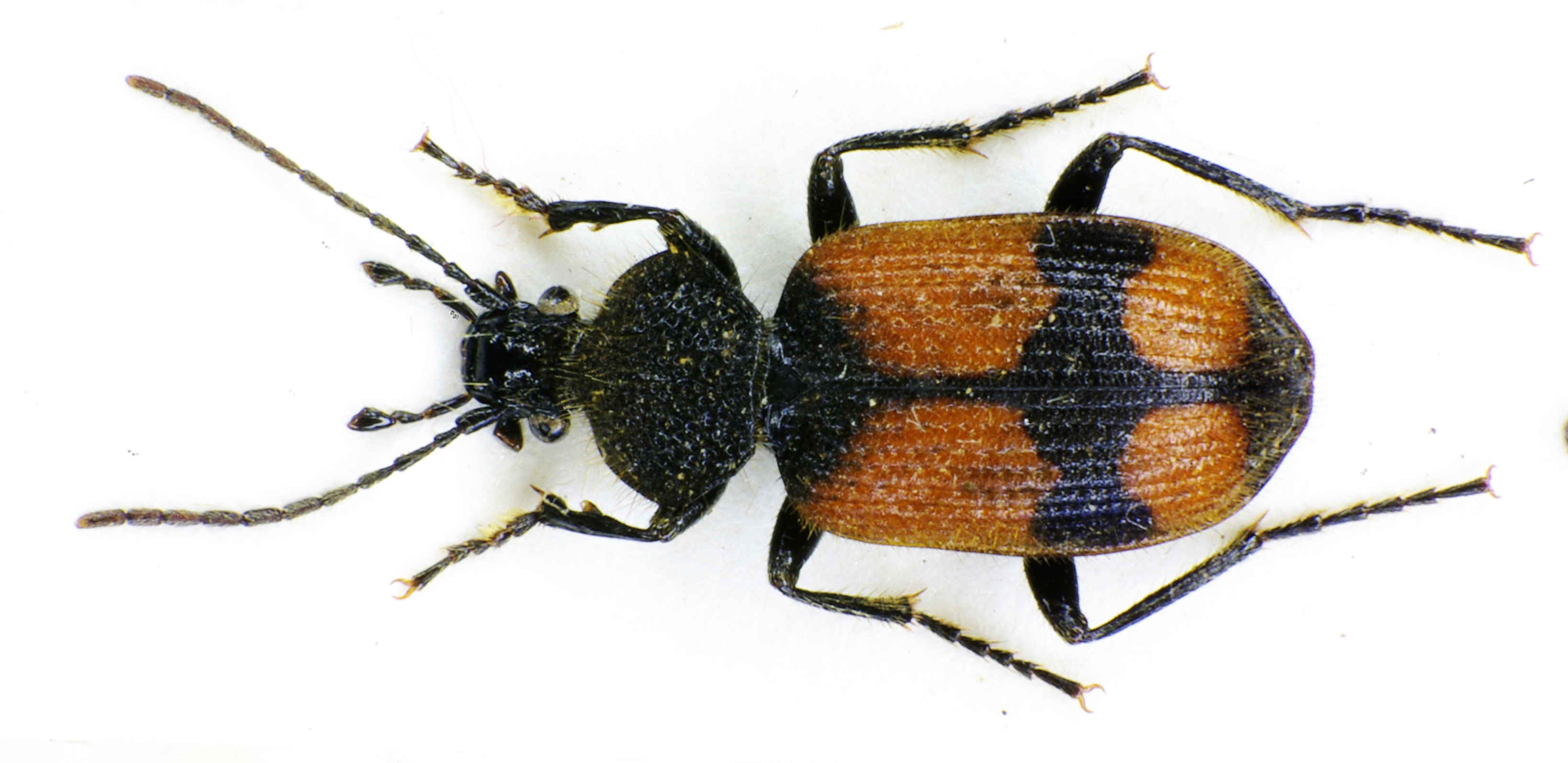|
Pentaplatarthrus
''Pentaplatarthrus'' is a genus of in the beetle family Carabidae. There are about eight described species in ''Pentaplatarthrus'', found in Africa. These are ant nest beetles and are obligate myrmecophiles, predatory on ant larvae and workers. Species These eight species belong to the genus ''Pentaplatarthrus'': * ''Pentaplatarthrus bottegi'' Gestro, 1895 (Sudan, Somalia, and Tanzania) * ''Pentaplatarthrus dollmanni'' Wasmann, 1922 (Zambia, Zimbabwe, and Botswana) * ''Pentaplatarthrus focki'' Wasmann, 1919 (Namibia and South Africa) * ''Pentaplatarthrus gestroi'' Kolbe, 1896 (Kenya, Tanzania, Mozambique, Zimbabwe, and Namibia) * ''Pentaplatarthrus natalensis'' Westwood, 1850 (Namibia and South Africa) * ''Pentaplatarthrus paussoides'' Westwood, 1833 (Botswana, Namibia, and South Africa) * ''Pentaplatarthrus schoutedeni'' Reichensperger, 1925 (the Democratic Republic of the Congo) * ''Pentaplatarthrus vandamii'' van de Poll, 1886 (Angola and South Africa) References ... [...More Info...] [...Related Items...] OR: [Wikipedia] [Google] [Baidu] |
Pentaplatarthrus Dollmanni
''Pentaplatarthrus'' is a genus of in the beetle family Carabidae. There are about eight described species in ''Pentaplatarthrus'', found in Africa. These are ant nest beetles and are obligate myrmecophiles, predatory on ant larvae and workers. Species These eight species belong to the genus ''Pentaplatarthrus'': * ''Pentaplatarthrus bottegi ''Pentaplatarthrus'' is a genus of in the beetle family Carabidae. There are about eight described species in ''Pentaplatarthrus'', found in Africa. These are ant nest beetles and are obligate myrmecophiles, predatory on ant larvae and workers. ...'' Gestro, 1895 (Sudan, Somalia, and Tanzania) * '' Pentaplatarthrus dollmanni'' Wasmann, 1922 (Zambia, Zimbabwe, and Botswana) * '' Pentaplatarthrus focki'' Wasmann, 1919 (Namibia and South Africa) * '' Pentaplatarthrus gestroi'' Kolbe, 1896 (Kenya, Tanzania, Mozambique, Zimbabwe, and Namibia) * '' Pentaplatarthrus natalensis'' Westwood, 1850 (Namibia and South Africa) * '' Pentaplatarth ... [...More Info...] [...Related Items...] OR: [Wikipedia] [Google] [Baidu] |
Beetle
Beetles are insects that form the Taxonomic rank, order Coleoptera (), in the superorder Holometabola. Their front pair of wings are hardened into wing-cases, elytra, distinguishing them from most other insects. The Coleoptera, with about 400,000 described species, is the largest of all orders, constituting almost 40% of described arthropods and 25% of all known animal species; new species are discovered frequently, with estimates suggesting that there are between 0.9 and 2.1 million total species. However, the number of beetle species is challenged by the number of species in Fly, dipterans (flies) and hymenopterans (wasps). Found in almost every habitat except the sea and the polar regions, they interact with their ecosystems in several ways: beetles often feed on plants and fungi, break down animal and plant debris, and eat other invertebrates. Some species are serious agricultural pests, such as the Colorado potato beetle, while others such as Coccinellidae (ladybirds or ... [...More Info...] [...Related Items...] OR: [Wikipedia] [Google] [Baidu] |
Carabidae
Ground beetles are a large, cosmopolitan family of beetles, the Carabidae, with more than 40,000 species worldwide, around 2,000 of which are found in North America and 2,700 in Europe. As of 2015, it is one of the 10 most species-rich animal families. They belong to the Adephaga. Members of the family are primarily carnivorous, but some members are herbivorous or omnivorous. Description and ecology Although their body shapes and coloring vary somewhat, most are shiny black or metallic and have ridged wing covers ( elytra). The elytra are fused in some species, particularly the large Carabinae, rendering the beetles unable to fly. The species '' Mormolyce phyllodes'' is known as violin beetle due to their peculiarly shaped elytra. All carabids except the quite primitive flanged bombardier beetles (Paussinae) have a groove on their fore leg tibiae bearing a comb of hairs used for cleaning their antennae. Defensive secretions Typical for the ancient beetle suborder A ... [...More Info...] [...Related Items...] OR: [Wikipedia] [Google] [Baidu] |
Ant Nest Beetles
Ant nest beetles (subfamily Paussinae) or paussines, some members of which are known also as flanged bombardier beetles, are a large subfamily within the ground beetles (Carabidae).The tribes Metriini, Ozaenini, Paussini and Protopaussini are included in the subfamily. Rarely seen in the open, except at lights, most Paussinae are obligate or facultative myrmecophiles, living within the nests of ants, predatory on ant larvae and workers. Many have elaborate antennal structures and body parts flattened. Paussines are moderate sized (6–20 mm), characterised by glandular hairs that produce secretions attractive to ants and by the odd antennal structures of many species. Their pygidial glands can produce explosive secretions, with a spray of quinones that are directed forward by flanges at the posterior end of the elytra, giving them the other name of flanged bombardier beetles although they are not particularly close relatives of the typical bombardier beetles (Brachininae). ... [...More Info...] [...Related Items...] OR: [Wikipedia] [Google] [Baidu] |
Myrmecophile
file:Panaphis juglandis.jpg , thumb , Myrmecophilous aphids being tended by ants Myrmecophily ( , ) consists of positive, Mutualism (biology), mutualistic, interspecies Association (ecology), associations between ants and a variety of other organisms, such as plants, other arthropods, and fungi. It may also include commensalism, commensal or even parasite, parasitic interactions. A "myrmecophile" is an animal that associates with ants. An estimated 10,000 species of ants (Formicidae) are known, with a higher biodiversity, diversity in the tropics. In most terrestrial ecosystems, ants are ecologically and numerically dominant, being the main invertebrate predators. As a result, ants play a key role in controlling arthropod richness, abundance, and community structure. Some evidence shows that the evolution of myrmecophilous interactions has contributed to the abundance and ecological success of ants, by ensuring a dependable and energy-rich food supply, thus providing a competit ... [...More Info...] [...Related Items...] OR: [Wikipedia] [Google] [Baidu] |

